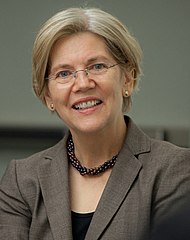- Consumers who opt in end up paying higher fees: The CFPB report looked at previous heavy overdrafters who declined to opt in when the new federal requirements were implemented in 2010. It found that by not opting in these accountholders reduced their overdraft and non-sufficient fund fees, on average, by more than $450 during the second half of 2010.
- Consumers who opt in to overdraft coverage are more likely to end up with involuntary account closures: Negative account balances are a significant contributor to involuntary account closures, which can leave a black mark on a consumer’s record and make it difficult to open an account elsewhere. The CFPB report found that involuntary closure rates at some banks in the study were more than 2.5 times higher for accountholders who had opted in to debit and ATM overdraft coverage.
Overdraft Practices Are Highly Complex for Consumers
The CFPB report raises questions about the ability of consumers to anticipate and avoid overdraft costs. Each institution’s overdraft policies, procedures, and practices are highly complex and can be difficult for a consumer to navigate, yet greatly affect whether and how often they will incur overdraft fees. These complexities include:
- Complicated fee structures: Depository institutions have different fee structures when it comes to the number of overdrafts that can be incurred in a single day. Some, for example, limit the number of overdraft charges in a day to two; others have no cap on fees or caps that allow as many as 12 overdrafts and non-sufficient fund fees in a day. Similarly, some institutions will not charge an overdraft fee for any item that overdraws the account by less than $5, while others charge fees on every overdraft transaction regardless of size.
- Overdraft coverage limits often depend on many factors: The overdraft coverage limit is the amount of money the institution is willing to advance to an accountholder when his or her funds are insufficient to cover a pending payment. Some institutions have fixed limits; others vary the limits based on the accountholder’s individual circumstances, such as his or her balance, overdraft history, or deposit patterns.
- Complex transaction postings: The order in which check, debit card, and other transactions are posted to an account can influence the number of overdraft fees. The report found wide variation in posting practices, from institutions debiting transactions at periodic intervals throughout the day to debiting them in nightly batches. Institutions also differ in how they combine, sort, or order the transactions. If larger transactions are processed first, a consumer can end up paying multiple overdraft fees on a single day, whereas posting smaller transactions first may result in only one overdraft fee.
Costs and Risks Vary By Institution
These different overdraft policies, procedures, and practices lead to very different outcomes for consumers at different financial institutions. This raises questions about some overdraft practices that can be difficult for consumers to navigate. The CFPB report found:
- Average annual overdraft charges vary among institutions: The report found the average consumer who overdrew his or her account paid $225 in overdraft and non-sufficient fund charges over the course of one year. But among the institutions in the report, consumers at some banks paid an average of $298 while consumers at others paid $147.
- Involuntary account closures vary widely: The highest involuntary account closure rate observed in the study was 14 times the involuntary closure rate at the bank with the lowest rate.
A factsheet about overdraft practices is available at: http://files.consumerfinance.gov/f/201306_cfpb_factsheet_overdraft-practices.pdf
The CFPB has the authority to protect consumers in accordance with federal consumer protection law. The goal is to make checking accounts fair, transparent, and competitive and to ensure that consumers are empowered to take control over their financial lives. Toward this end, the CFPB plans to engage in further review of account-level data – which will not contain consumers’ personally identifiable information – to better understand how differences in practices affect consumers.
The Consumer Financial Protection Bureau is a 21st century agency that helps consumer finance markets work by making rules more effective, by consistently and fairly enforcing those rules, and by empowering consumers to take more control over their economic lives. For more information, visit consumerfinance.gov. 
Editor's Note: Senator Elizabeth Warren was the Special Advisor to the Secretary of the Treasury for the Consumer Financial Protection Bureau under President Barack Obama, September 17, 2010 to August 1, 2011.
The bank pictured at top by Colin Rose has no connection to the CFPB report.
Pages: 1 · 2
More Articles
- Federal Trade Commission Report To Congress: Adults 60 and Older Report Losses of $1.6 Billion in 2022 to Scams; Investment Scams are Top Reported by Dollars Lost
- Senate Commerce Subcommittee Set ... Protecting Kids Online: Testimony From a Facebook Whistleblower
- Jo Freeman Reviews Electing Madam Vice President by Nichola D. Gutgold
- Help From a Familiar (and revamped) Government Resource: Consumer Financial Protection Bureau Resources For Consumers During Covid-19 Pandemic
- Nichola Gutgold Writes: “Klob-mentum” and the Pronouns To Help
- Biden, Klobuchar Rankings by the Lugar Center Highest Among Presidential Candidates Who Built Bipartisan Collaboration in the Senate
- Kavanaugh Protests Continue: "Sexual Predators on the Court, Hell No, We Don’t Support" and "November Is Coming"
- Jo Freeman's Marching for Immigrants – Again; With the Theme of 'We Care'
- Scam Alert: IRS Urges Taxpayers to Watch Out for Erroneous Refunds; Beware of Fake Calls to Return Money to a Collection Agency
- Women Rule? We're Getting Closer






